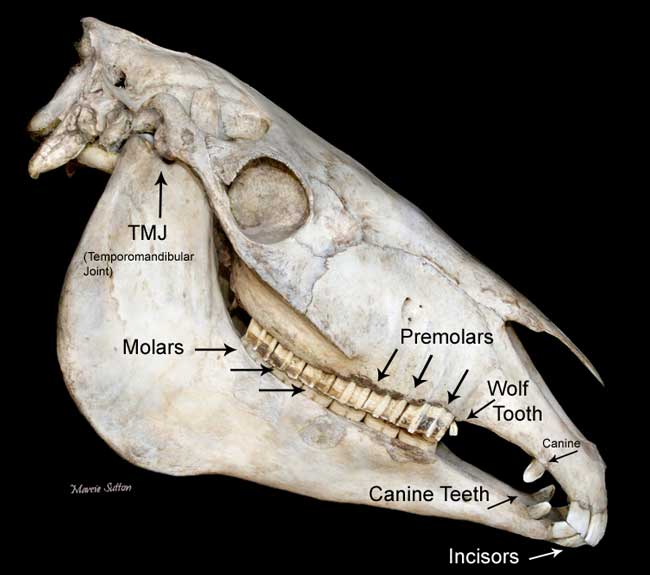| Home Medical Index | First Posted: Mar 15, 2011 Jan 21, 2020 | |
A Review of Conditions of the Equine Temporomandibular JointWhat does it mean when your horse has equine temporomandibular joint problems? How do these problems affect a horse? Have you noticed that your horse pulls the reins out of your hands, is heavy in your hands, twists, tosses or shakes his head, is head shy, has a stiff back or neck, balks, rears, bucks, or spins, has had a loss of appetite, is colicing, has dental abnormalities or has been recently had teeth floated or worked on. Do you hear a popping noise when your horse chews food? These could be symptoms of a horse that has TMJ. TMJ is short for the temporomandibular joint in horses. This joint is located at the rear portion of the lower jaw where the jaw joins the skull. Temporal mandibular joint dysfunction (TMJD) is the phrase used to refer to conditions affecting the TMJ. TMJ affects can be unbelievably painful to your horse. Long term TMJ may even cause a horse to go lame because the horse changes the way it holds its body in order to try to get away from the pain! Horse Skull I, Marcie Sutton, owner of Restless Night, LLC give permission for the single use of my photo depicting a horse skull to be used by HorseHints.org for educational purposes. Restless Night "The ability to move the jaw properly - side to side, up and down, forward and back - affects not only the ability to chew and digest food, but also affects the body's balance and biomechanics. Proper function of the TMJ Mechanism is vital to horse health. Today, all horses are exposed to a variety of contributing factors that affect the proper movement of the jaw. Some of these factors include the wearing of certain types of bits or nosebands, eating out of hayracks, getting stuck between fence posts, undergoing various types of dental work, and lack of proper dental work. Due to these and other factors, horses are prone to the condition known as Temporomandibular Dysfunction, or TMD...." To read more on this article and see many excellent images just follow the link: A Review of Conditions of the Equine Temporomandibular Joint. For More Information: Equine Temporomandibular Joints (TMJ): Morphology, Function, and Clinical Disease |